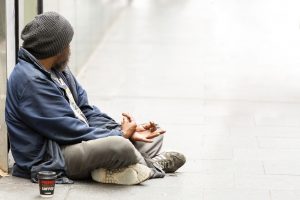Understanding the cycle of vulnerability

Brain injury can impact someone at any stage of life.
No two brain injuries are the same and how they affect each person can have far reaching influence, for those living with a brain injury and people living with someone who has a brain injury. Without the right support, knowledge and opportunities at the key milestones in life, people impacted and living with a brain injury can fall into the cycle of vulnerability. Vulnerability after a brain injury is experienced by Australians from all backgrounds.
What is the cycle of vulnerability?
When a brain injury occurs, it affects any number of cognitive functions that alter the lives of those living with a brain injury as well as the lives of their family and others close to them. Some of these changes can amplify vulnerabilities after a brain injury and limit life choices and self-determination. This can leave individuals in a cycle where they experience vulnerabilities like unemployment, homelessness, drug and alcohol abuse, family violence as well as lack of education.
The gaps and vulnerabilities experienced by people living with brain injury is increased when government systems don’t connect and integrate. People are often subjected to interventions that fail to recognise or adequately address the need that can change someone’s life trajectory.
Vulnerabilities after a brain injury vary depending on which stage of the life the individual is in:
- As a child – Children who experience family violence or have mothers who abuse alcohol and drugs may experience a brain injury from a head trauma or fetal alcohol spectrum disorders (FASD). Then they enter youth with significant developmental consequences that affect their wellbeing and education.
- As a young adult – A home environment that lacks stability due to unemployment, homelessness or transient housing, as well as drug and alcohol abuse in the family sees youth at risk of suffering a brain injury and sometime ending up in the youth justice system.
- As an adult –The likelihood of falling into the gaps our systems grow in adulthood, as people with a brain injury may struggle to integrate into society. This may see them in prison or reoffending, experiencing lack of housing and employment, abusing alcohol and drugs, or become perpetrators of family and domestic violence leaving their family also at risk of a brain injury.
- As a senior – Ageing increases your risk of brain injury as you’re likely to experience falls/bumps to the head or suffer brain degenerating conditions like dementia. Seniors living with a disability can also experience mistreatment, drug and alcohol abuse, as well as homelessness.
How can the cycle be broken?
Synapse exists to break this cycle of vulnerability by connecting knowledge, policy, services, and systems to support those impacted by brain injuries. The goal is to see people thrive and successfully integrate into society rather than be subjected to interventions that fail to recognise or adequately address their needs and change their trajectory in life.
- As a child – Our first cultural and social connections come from our family providing a foundation for our lives. Providing a place of support for parents with a brain injury that gives them opportunities to form healthy social and cultural connections for the family to go to in need, as well as educating people on the risks of alcohol and pregnancy.
- As a young adult – Stability impacts our wellbeing and feeds into other areas of life. Help accessing education, finding ways to establish belonging and identity for youth in community, or securing stable housing will help establish a beneficial foundation for young people impacted by brain injury.
- As an adult – Choice and self-determination is expanded when people connect with their community. Supporting adults impacted by brain injury to keep healthy connections and finding affordable housing and stable employment can reduce the likelihood of being incarcerated.
- As a senior – Keeping healthy connections support wellbeing as we age. Services that keep the brain active, and housing where care is provided to reduce fall risks while creating a sense of belonging and positive connections is ideal.